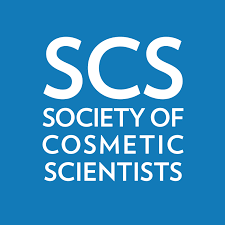Sun Care Base Cosmetic Formulations
At Cosmetic Scientist, we empower our customers with a variety of Sunscreen Base formulas crafted by expert cosmetic scientists, allowing them the freedom to create their own unique formulations. Each formula is accompanied by detailed information on where to source the necessary raw materials within the UK, ensuring a seamless procurement process. Additionally, we provide clear, step-by-step instructions on how to transform these base formulas into finished products. To further support our customers, we offer a complimentary 30-minute consultation call to address any questions or provide guidance on the formulation process. Whether you're a seasoned formulator or just starting, we are here to assist you in bringing your cosmetic creations to life. Call to Book for an introduction call 0207 6327557.


Starting your own cosmetic crafting journey can be both exciting and overwhelming, and using Sun Care base cosmetic formulations is often the best option for newcomers. These formulations provide a solid foundation, allowing crafters to experiment with textures, scents, and colours without getting lost in the complexities of creating products from scratch. By beginning with established bases, you can focus on enhancing your creations with personal touches, like essential oils or natural extracts, helping to hone your skills while minimising the risk of unwanted reactions. Additionally, using base formulations helps maintain consistency in your products, which is essential when testing new ideas or sharing with friends and family. Ultimately, this approach not only simplifies the crafting process but also boosts confidence, encouraging enthusiasts to explore their creativity in the world of cosmetics.
Memberships




Formulating sun care products is a meticulous process that requires a deep understanding of both cosmetic science and the specific needs of the skin under sun exposure. Cosmetic scientists follow a structured approach to ensure their formulations are effective, safe, and aesthetically pleasing. Below, I outline the key steps they typically take in creating sun care formulations, such as sunscreens.
1. Understanding Sun Protection Needs
The first step involves a thorough understanding of the different types of radiation that the skin is exposed to, primarily UVA and UVB rays. UVB rays are responsible for sunburn and play a significant role in the development of skin cancer, while UVA rays penetrate the skin more deeply and contribute to photoaging. Scientists must also take into account the varying skin types, demographics, and environmental factors affecting users in different regions.
2. Defining the Formulation Goals
Once the sun protection needs are understood, cosmetic scientists outline the goals of the formulation. This may include:
- SPF Level: Establishing the desired sun protection factor based on product needs (e.g., daily use vs. outdoor activities).
- Water Resistance: Determining whether the formula needs to be water-resistant or sweat-resistant, especially for sport sunscreens.
- Skin Feel and Aesthetics: Considering texture, absorption, and finish to ensure that the product is pleasant to use, as consumers often prefer non-greasy, lightweight formulations.
3. Selecting Active Ingredients
The next step is to choose the active ingredients that provide sun protection. Cosmetic scientists often consider:
- Chemical Filters: These absorb UV radiation and may include ingredients like avobenzone, octisalate, and octocrylene.
- Physical (Mineral) Filters: These reflect UV radiation, with zinc oxide and titanium dioxide being the most common.
- Combination Ingredients: Some products use both types of filters for a broad spectrum of protection. Scientists must ensure the selected ingredients comply with regulations and are supported by efficacy data.
4. Formulation Development
With the active ingredients chosen, scientists can begin developing the formulation. This includes the decision of:
- Form type: Will it be a lotion, cream, gel, spray, or stick? Each form has advantages and influences consumer preference.
- Base Ingredients: Selecting emollients, emulsifiers, preservatives, and other ingredients that enhance skin feel and stability.
- pH and Viscosity: Ensuring the product maintains the correct pH and has a desirable viscosity for easy application.
5. Stability Testing
Once a preliminary formulation is developed, stability testing is crucial to ensure that the product remains effective and safe under varying conditions. This includes:
- Thermal Stability: Subjecting formulations to temperature extremes to evaluate how they perform over time.
- Physical Stability: Assessing whether the formulation separates or changes in consistency.
- Chemical Stability: Monitoring the actives over time to ensure they remain effective and do not degrade.
6. Efficacy Testing
To substantiate the claims of a sun care formulation, cosmetic scientists conduct efficacy testing. This may involve:
- SPF Testing: Conducting studies to measure the SPF in accordance with regulatory standards, typically involving human volunteers in controlled environments.
- Water Resistance Tests: Evaluating how well the product holds up under water or sweat exposure.
7. Safety Assessment
Safety is paramount in cosmetic formulations, particularly for products applied to the skin. Scientists carry out safety assessments that include:
- Dermatological Testing: Ensuring the formulation does not irritate skin or cause allergic reactions.
- Toxicology Reviews: Engaging in literature reviews and pre-market safety assessments for all ingredients.
8. Packaging Considerations
The packaging chosen for sun care products also plays an important role in product efficacy and user experience. Cosmetic scientists consider factors such as:
- UV Protection: Choosing materials that protect the product from UV exposure which can degrade formulation efficacy.
- Dispensing Mechanism: Ensuring the container allows for easy application and limits contamination.
9. Regulatory Compliance
Before launching a product, it must comply with local and international regulations regarding cosmetics and sunscreens. This step involves:
- Labeling Regulations: Ensuring all claims and ingredient listings adhere to legal requirements.
- Submission to Regulatory Bodies: Obtaining approval from necessary authorities based on testing results.
10. Consumer Testing and Feedback
Before finalizing the product for market, ideally, it is subjected to consumer testing to gather feedback on user experience, perception, and effectiveness. This input can lead to final adjustments prior to mass production.
Conclusion
Formulating sun care products is a complex and science-driven process that combines knowledge of dermatology, chemistry, and consumer preferences. By following these steps, cosmetic scientists can create effective and safe formulations, ensuring they meet the protection needs of consumers while also being enjoyable to use. The ultimate goal is to provide sun care products that help prevent skin damage while promoting healthy skin practices.
Address
Cosmetic Scientist C/O Harley St Cosmetic Ltd
85 Great Portalnd St, London W1W 7LT
Contacts
Contact@CosmeticScientist.com
Tel +44 0207 6327557
Subscribe to our newsletter
